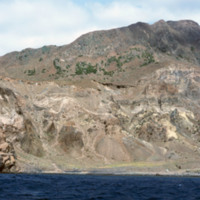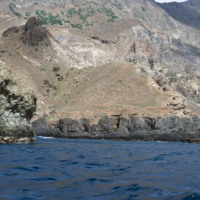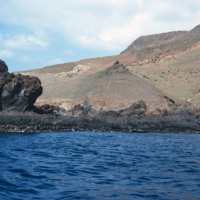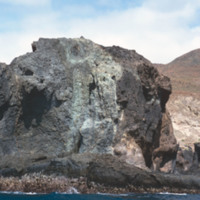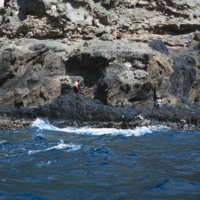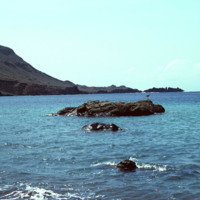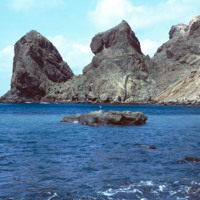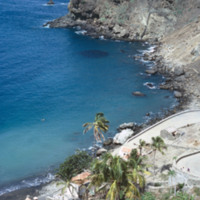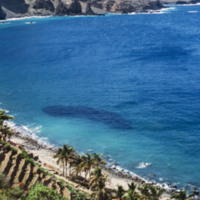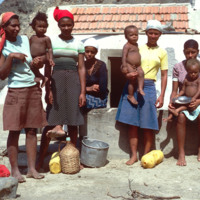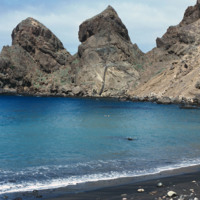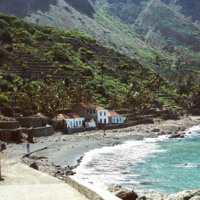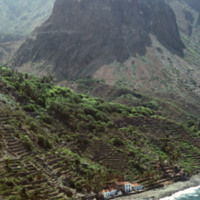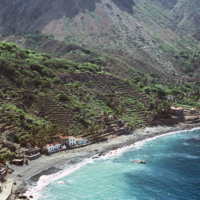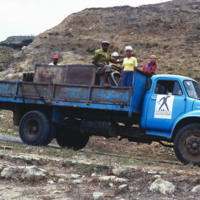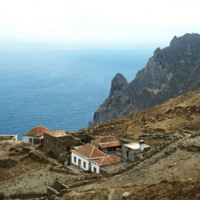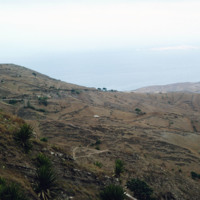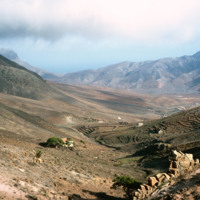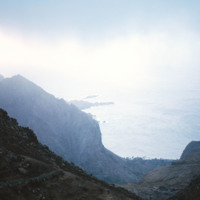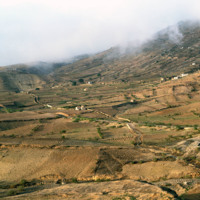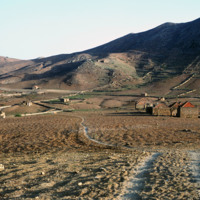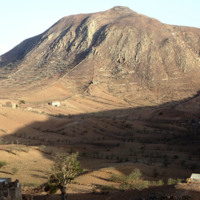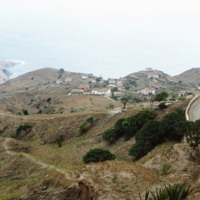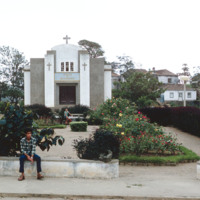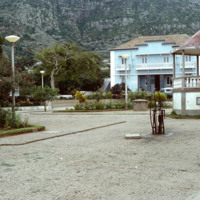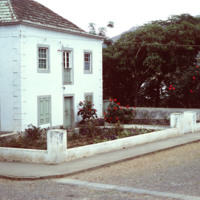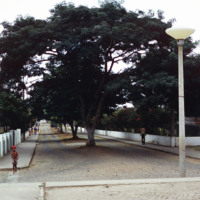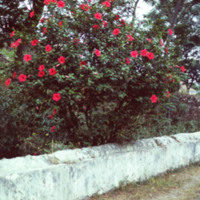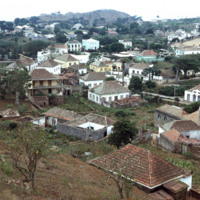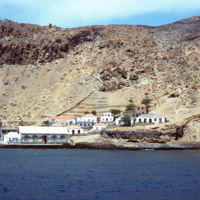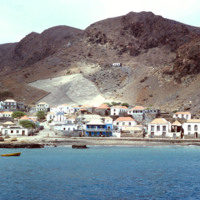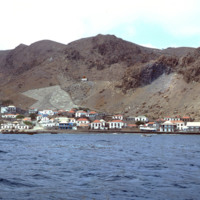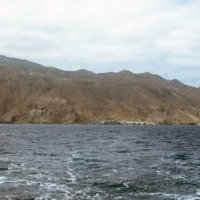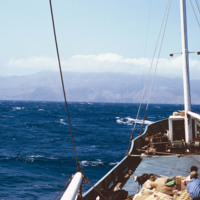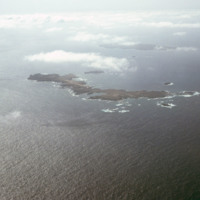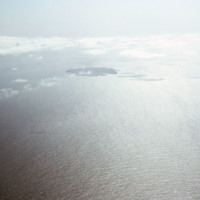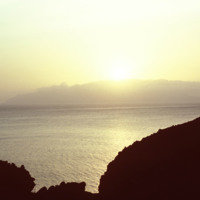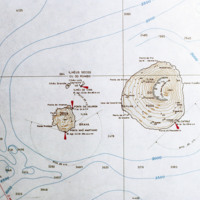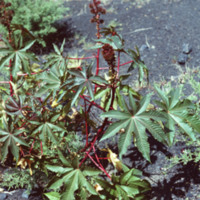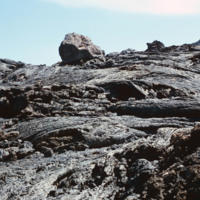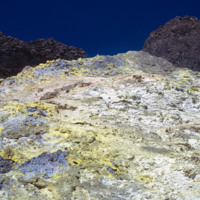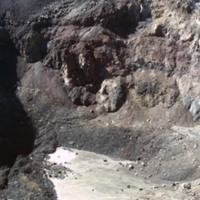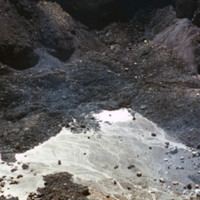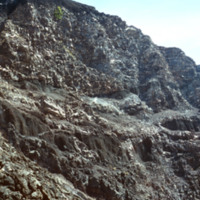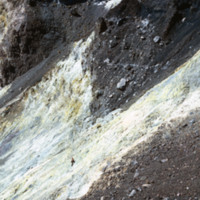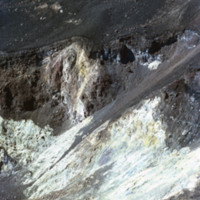Browse Items (1954 total)
Brava Coastline & Cliffs
Tags: brava, coast, coastline, rocky, shore, transportation, volcanic rock, waterfront
Brava Coastline
Tags: brava, coast, coastline, rocky, shore, transportation, volcanic rock, waterfront
Brava Coastline [Landscape]
Tags: brava, cliffs, coast, coastline, landscape, mountains, rocky, shore, transportation, waterfront
Brava Coastline
Tags: brava, cliffs, coastline, rocky, shoreline, steep, transportation, waterfront
Man on Brava Coast
Tags: boat, brava, coastline, fisherman, fishing, transportation, waterfront
The Bay at Fajã d'Água
Tags: bay, brava, Fajã d'Água, harbor, mountains, waterfront
Protected Harbor at Fajã d'Água
Tags: bay, brava, Fajã d'Água, harbor, mountains, waterfront
Bay at Fajã d'Água
Tags: bay, brava, Fajã d'Água, harbor, terraced farming, village, whaling
Residents of Fajã d'Água
Tags: brava, Fajã d'Água, residents, villagers
Harbor at Fajã d'Água
Tags: bay, brava, Fajã d'Água, harbor, mountains, waterfront
Fajã d'Água Shore
Tags: beach, brava, coast, Fajã d'Água, fishing, shore, terraced farming, village, waterfront
Fajã d'Água, Village at the Foot of a Mountain
Fajã d'Água, Aerial View
Tags: aerial, bay, brava, coast, coastline, Fajã d'Água, harbor, shore, village, waterfront
Aluguer
Tags: aluguer, brava, roads, transportation, truck
Descending into Fajã d'Água
Tags: brava, cliffs, coastline, Ilhéu da Areia, shore
Brava Landscape
Tags: brava, landscape, tableland, transportation
Brava Landscape, High Elevation
Tags: brava, elevation, landscape, mountains, transportation
Misty View of Brava
Tags: brava, coastline, elevation, mist, transportation, waterfront
Tableland of Brava
Nova Sintra and Coastline
Tags: brava, cliffs, coastline, landscape, Nova Sintra, roads, transportation, village
Ingreja do Nazareno, Protestant Church
Tags: architecture, brava, church, Nova Sintra, religious architecture
Square in Nova Sintra
Tags: brava, Nova Sintra, praça, square, vegetation, village, water, well
House in Nova Sintra
Tags: architecture, brava, dwelling, house, Nova Sintra, residence, roads, vegetation, village
Shady Street in Nova Sintra
Tags: brava, cobblestone, Nova Sintra, street view, vegetation, village
Hibiscus Tree in Nova Sintra
Tags: brava, hibiscus tree, Nova Sintra, vegetation, village
Nova Sintra
Tags: brava, landscape, Nova Sintra, tile roof, village
Passengers on Boat Voyage to Brava
Tags: flag, passengers, portrait
The Ilhéus do Rombo, Aerial Photograph
Fogo & The Ilhéus do Rombo, Aerial Photograph
Vegetation on Pico do Fogo
Tags: fogo, mineral deposits, vegetation, volcano
Pico do Fogo, Recent Lava Flows
Tags: fogo, lava flows, pico do fogo, volcanic rock, volcano
Guide to Pico do Fogo
Tags: david baxter, dormant, fogo, guide, pico do fogo, volcanic rock, volcano
David Baxter in Pico do Fogo
Tags: david baxter, dormant, fogo, pico do fogo, volcanic rock, volcano
Inside Pico do Fogo, Dormant Volcano (6)
Tags: dormant, pico do fogo, volcanic rock, volcano
Inside Pico do Fogo, Dormant Volcano (4)
Tags: dormant, fogo, pico do fogo, volcanic rock, volcano
Inside Pico do Fogo, Dormant Volcano (3)
Tags: dormant, fogo, pico do fogo, volcanic rock, volcano
Inside Pico do Fogo, Dormant Volcano (2)
Tags: dormant, fogo, pico do fogo, volcanic rock, volcano
Inside Pico do Fogo, Dormant Volcano (1)
Tags: dormant, fogo, pico do fogo, volcanic rock, volcano
